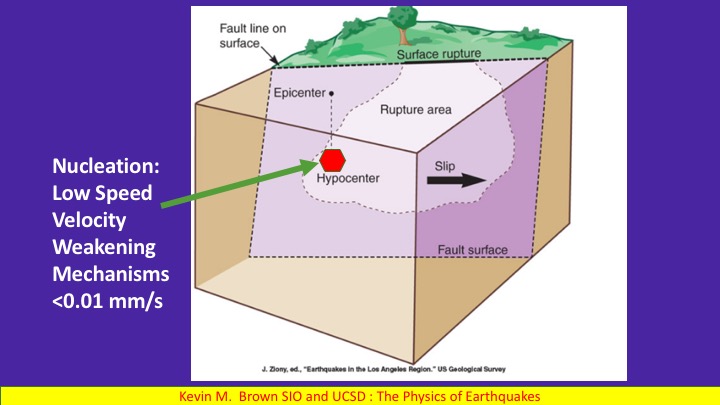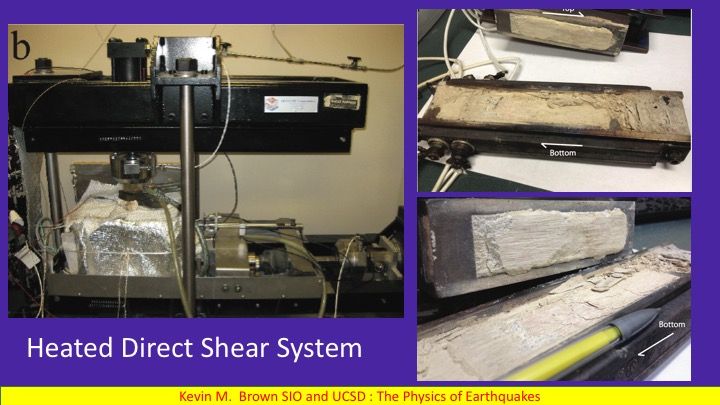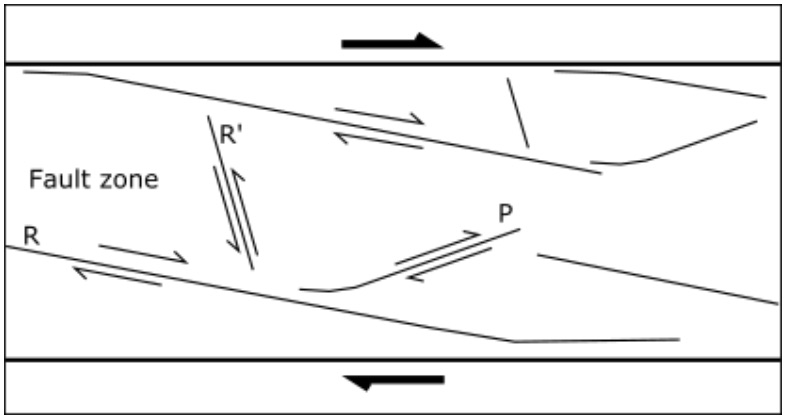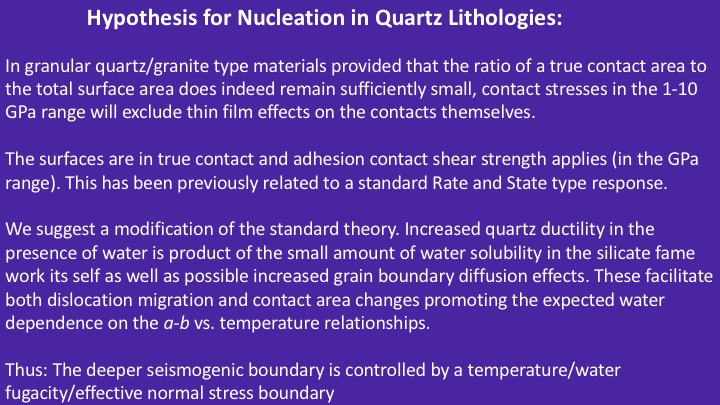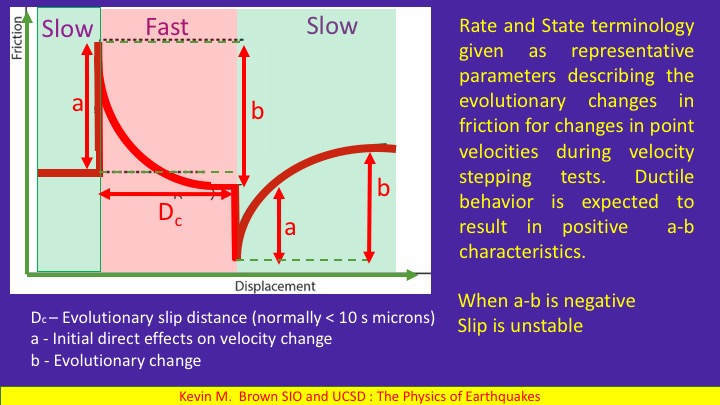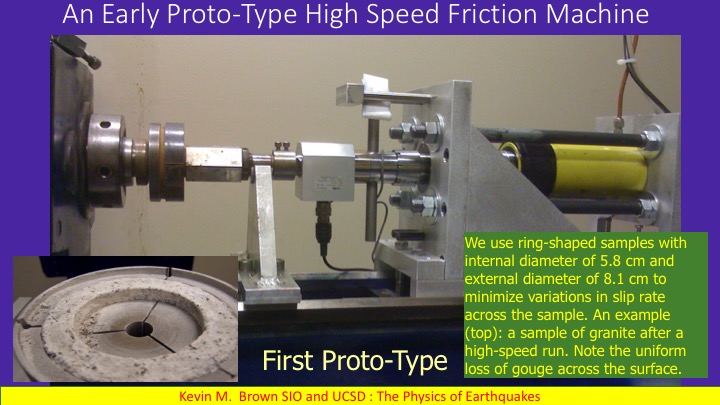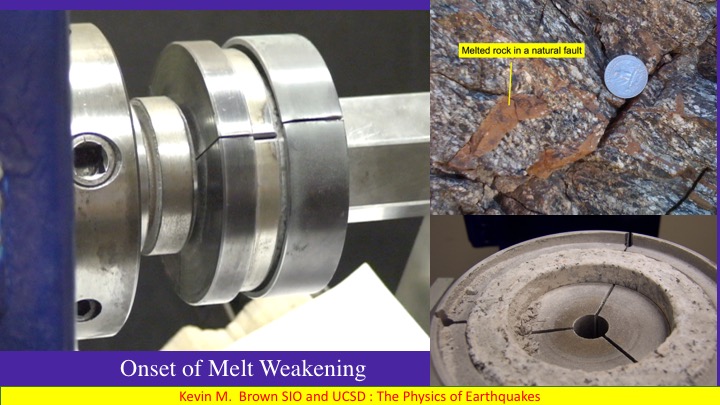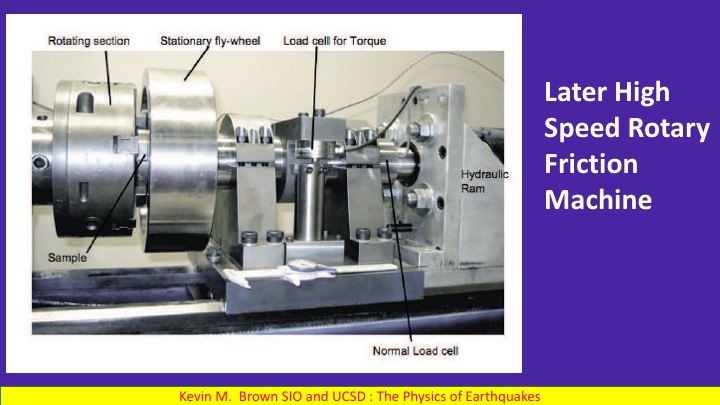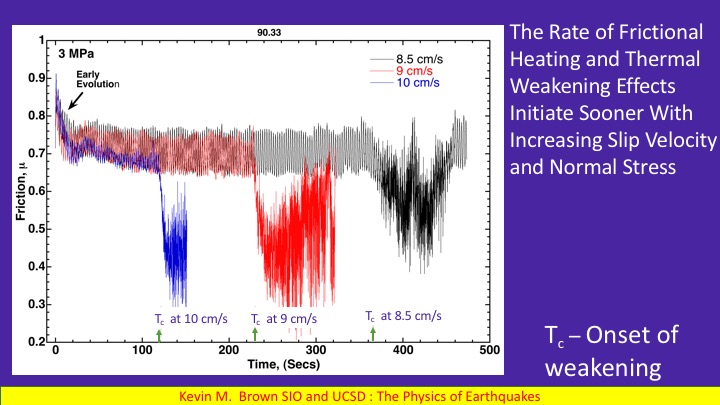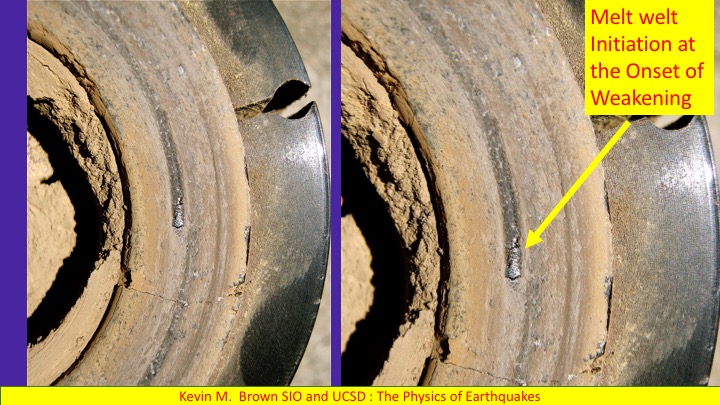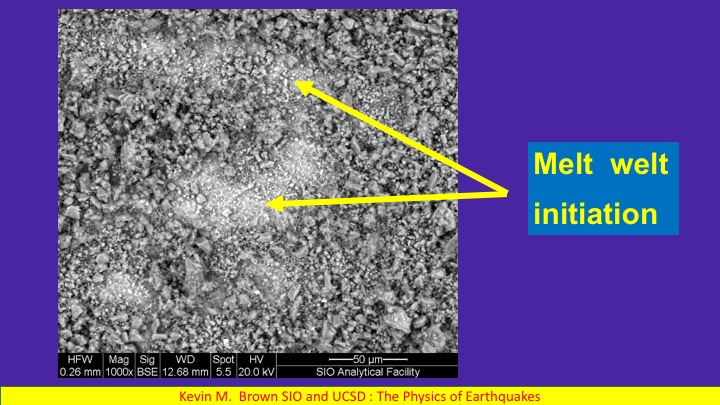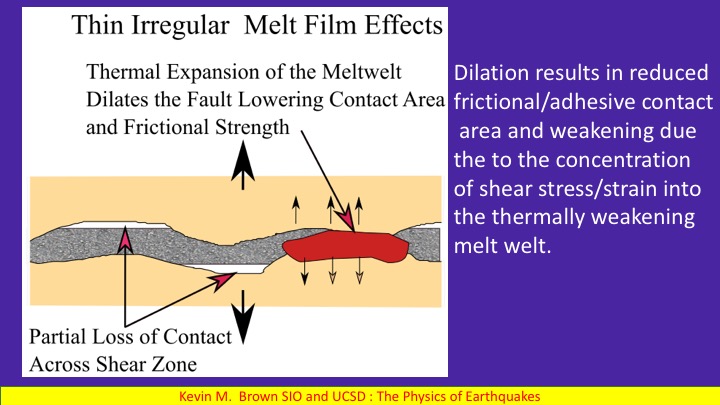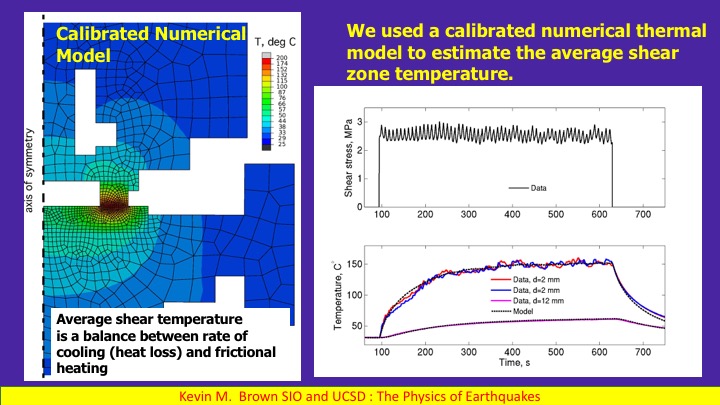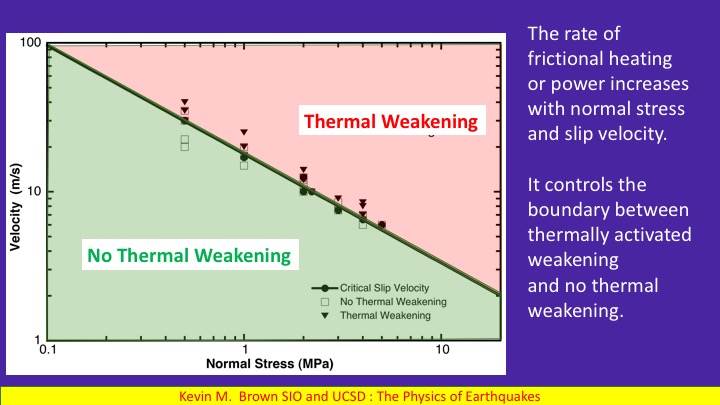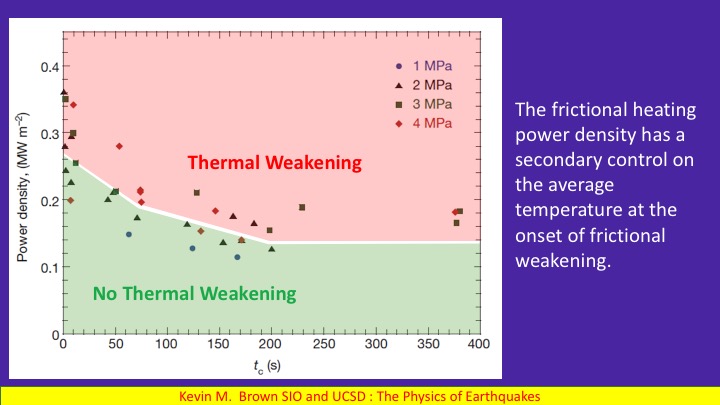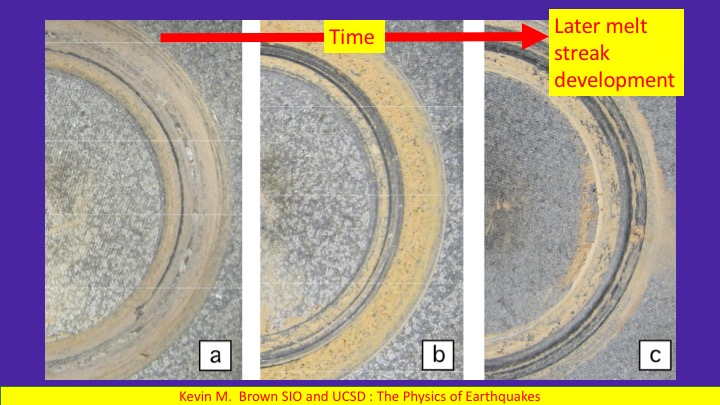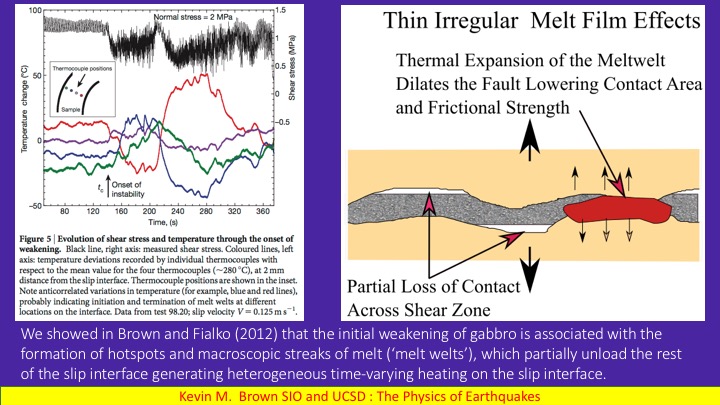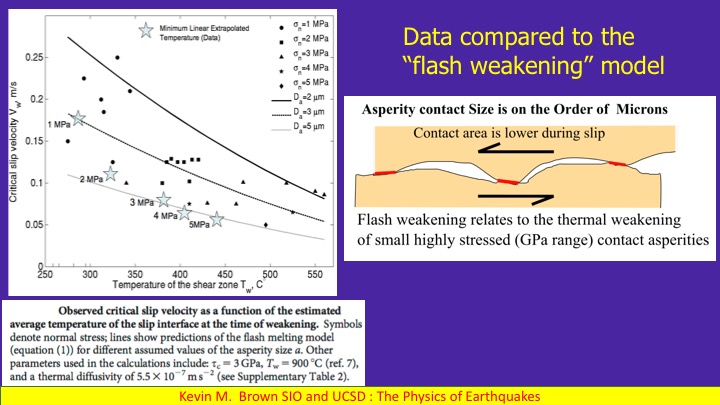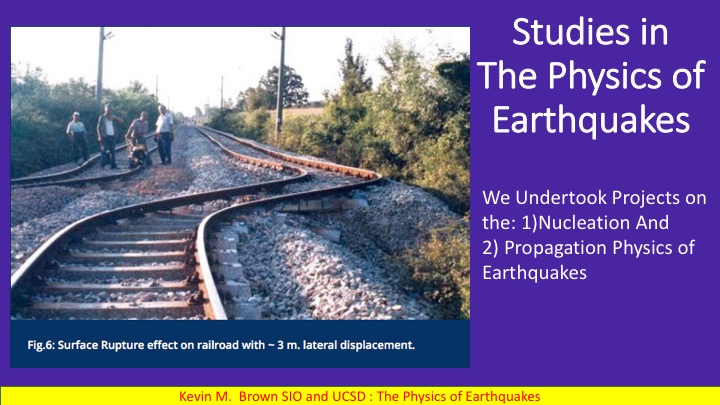
Please expand figures to view content.
This project seeks to evaluate the frictional weakening mechanisms associated with the nucleation of unstable slip and eventual propagation of earthquake ruptures. Slip rates on faults during nucleation are low <0.1 mm/s but greatly accelerate to between 1-10 m/s during rupture. The rupture front propagate at km/s and generates destructive shaking.
Nucleation studies were conducted in a modified heated direct shear apparatus constructed at SIO.
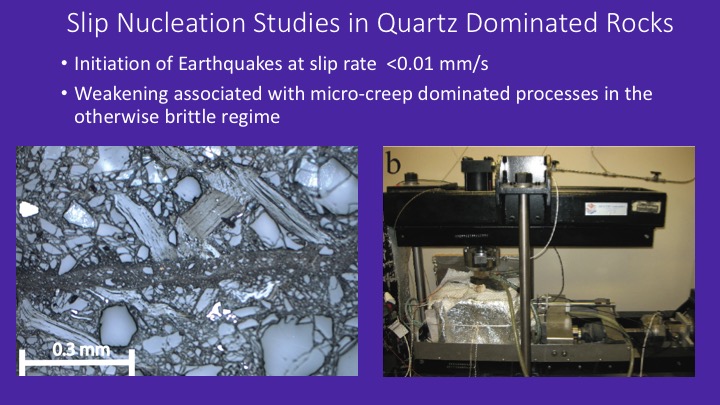
The heated shear zones develop and well developed fabric. Later studied were conducted on thick heated gouge samples.
Unstable slip can occur because dynamic friction varies with slip speed and can lead to transient fault weakening.
Comparison of new and previous a-b data. Negative a-b values denote unstable slip.
To slip unstably the a-b values must become negative.We observed together with previous studies that both temperature and the presence of water control the stability of quartz dominated lithologies.
The dip of the slip nucleation region varies with fault conditions.

Our results support the hypothesis that the seismogenic zone in quartz dominated crust is controlled by 1) effective normal stress, 2) temperature, 3) water fugacity, and 4) rock type.
***************************************************************
HIGH SPEED FAULT WEAKENING DURING RUPTURE
Early Prototype Rotary Shear System
Frictional heating of stressed faults and elevated slip rates can Lead to melt weakening and Pseudotachylite formation. Pseudotachylites are glassy previously melted rock that can form veins around earthquake faults.
The onset of weakening at time Tc is quite sharp. At low stresses weakening is followed by strengthening as a thin viscous melt layer forms.
We attribute early weakening to initial melt wedging of the fault.
The wreakening show very systematic relationships to the rate of fricti0nal heat


